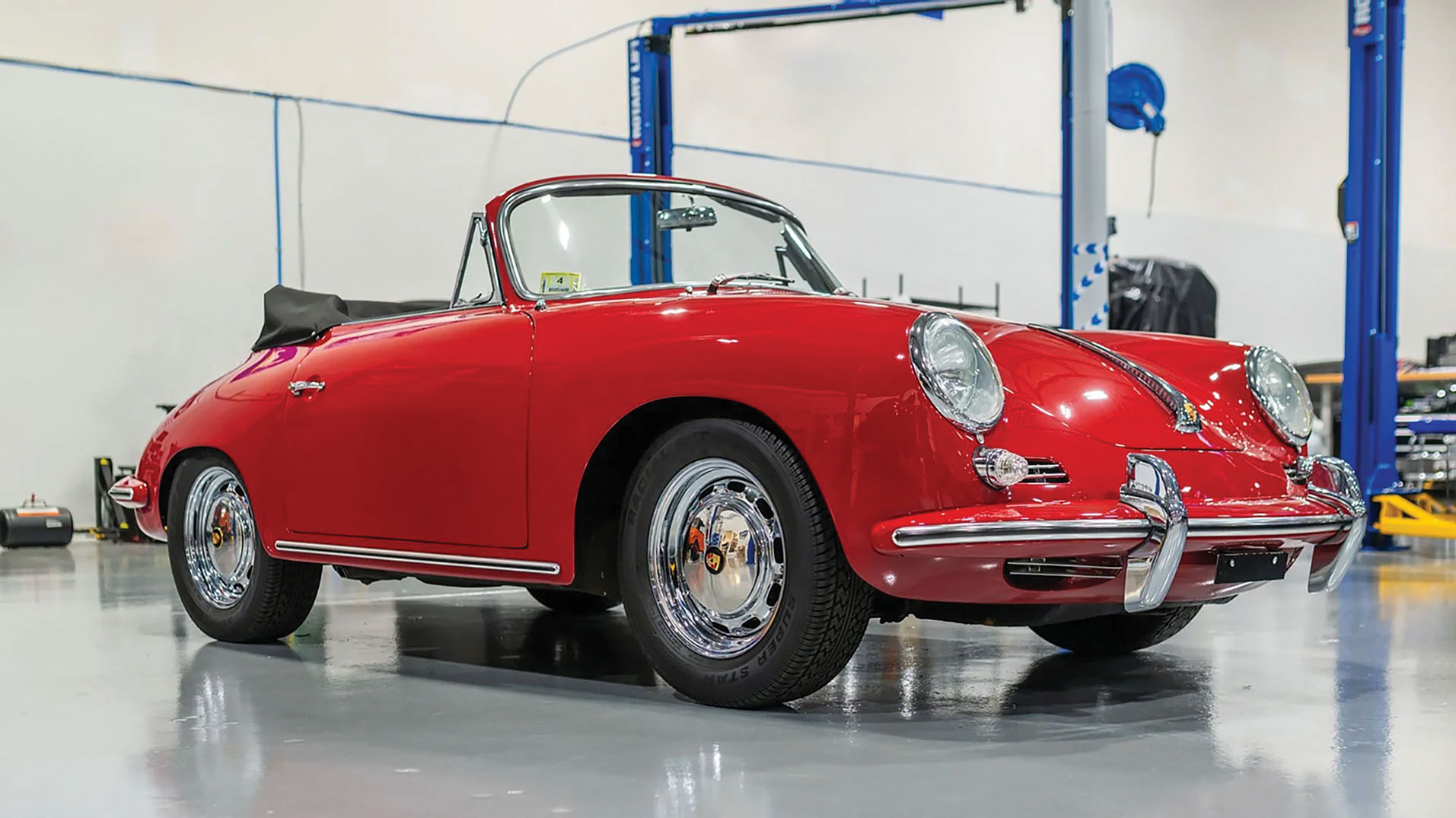The final iteration of the lightweight, rear-engined, rear-wheel-drive Porsche 356, the 356C, appeared in 1964, coinciding with Porsche’s purchase of the Reutter coachbuilding firm, which would handle all coupe and cabriolet construction in Stuttgart for the remainder of 356 production. New equipment included four-wheel disc brakes, a ZF steering gear and an optional 12-volt electrical system. The most significant improvement over its predecessor was the availability of a 1,600-cc “SC” engine with a higher compression ratio and counterweighted crankshaft allowing it to produce 95 horsepower — the most powerful pushrod engine produced by Porsche at the time. Available in a range of open-top body styles throughout the 15-year production of the 356, the cabriolet was always the most expensive when new.
A left-hand-drive example dating from the penultimate year of production, this 1964 356 SC cabriolet was completed at Porsche’s Zuffenhausen factory on November 28, 1963, in Rubinrot (Ruby Red — 6402) paintwork with a (Schwarz) black leather interior. According to its Porsche-issued Certificate of Authenticity, the range-topping SC cabriolet was additionally optioned with dual “Talbot” mirrors, fog lights and Dunlop tires. Although much of the car’s early history is unrecorded, a digital copy of its factory Kardex reveals that the cabriolet was sold new through Porsche Edgar Kittner Sportwagenzentrum in Lübeck, Germany, to its original owner. As the Kardex is essentially a warranty card, it records a replacement engine (KDP821546) was fitted by the original selling dealer on February 26, 1965.
Today, the consignor notes that this 356 SC presents beautifully throughout in its red-and-black color scheme, having benefited from a complete restoration at some point in its past, and that the current engine serial number matches the Porsche Certificate of Authenticity, which is nicely framed and included in the sale. Driven sparingly since completion, the cabriolet was recently subject to a complete inspection and servicing by the marque specialists at GMP Performance of South Atlanta, GA, and is said to be in superb mechanical condition. This final iteration of Porsche’s original design is offered with its matching black soft-top boot cover and is ready to be enjoyed.

